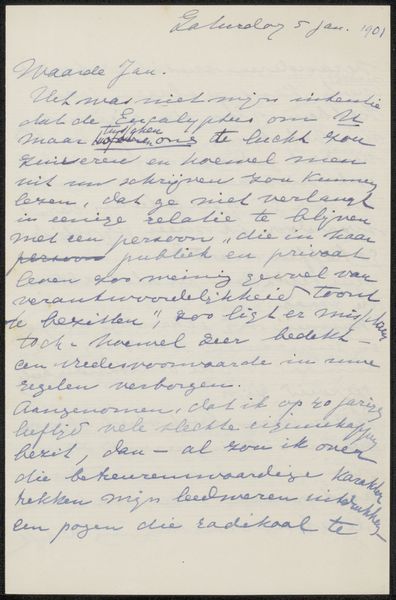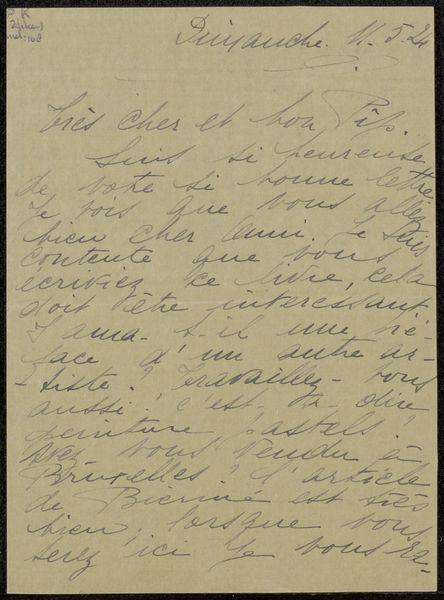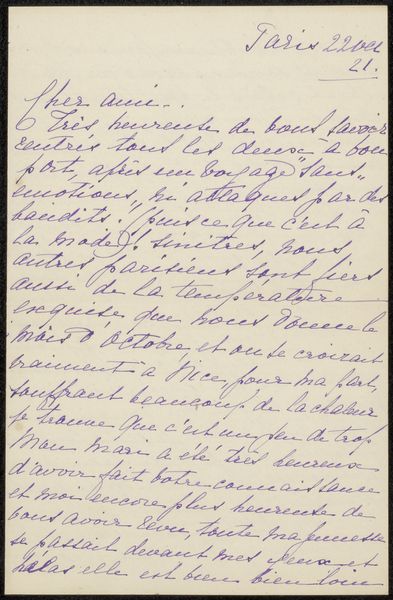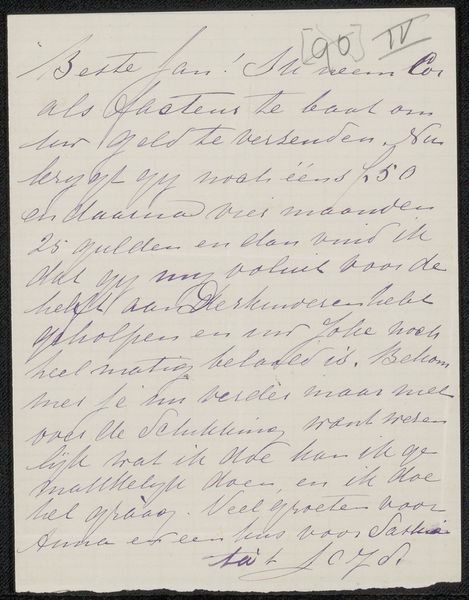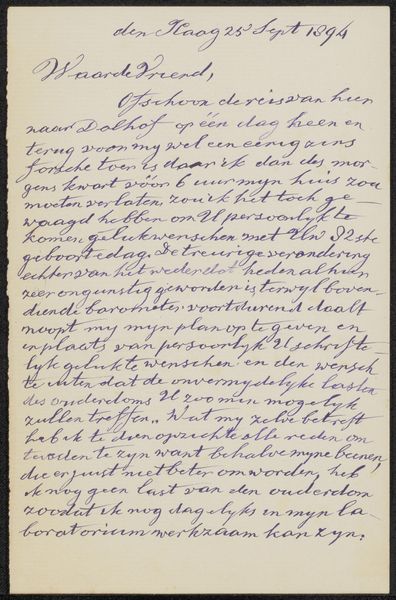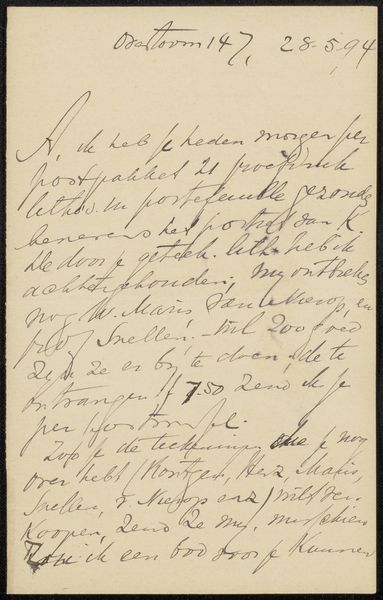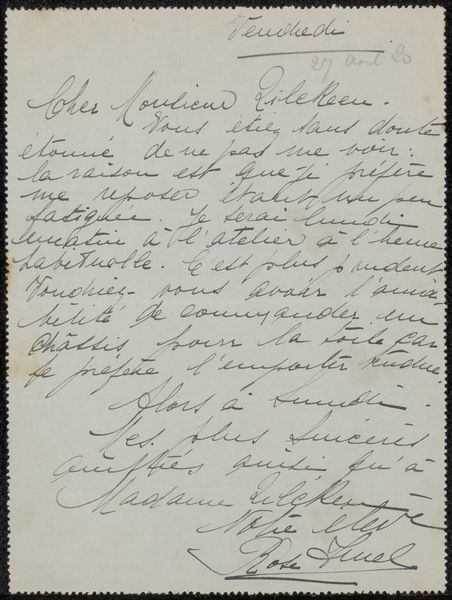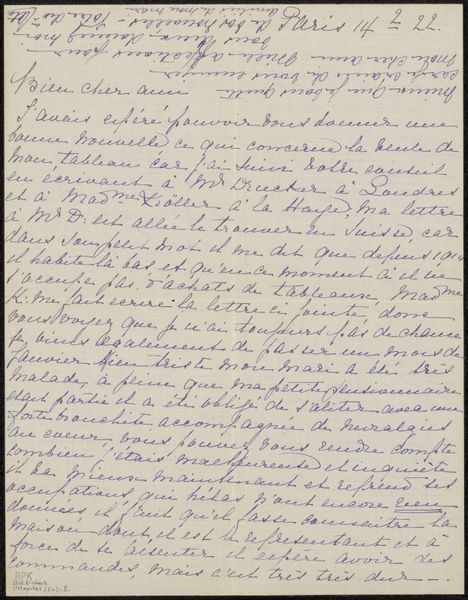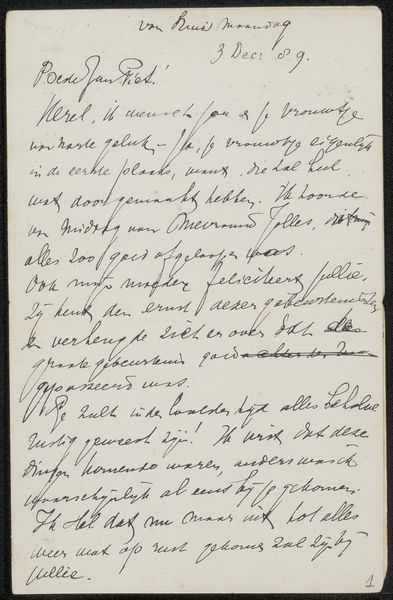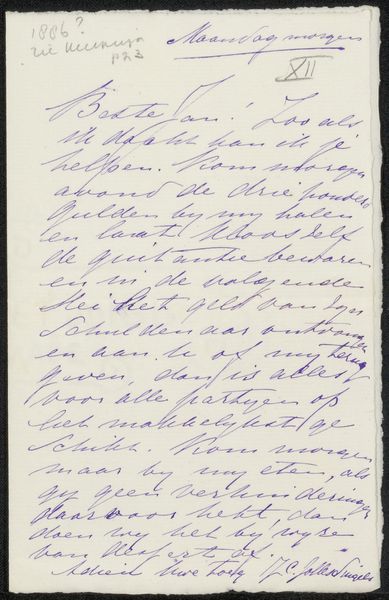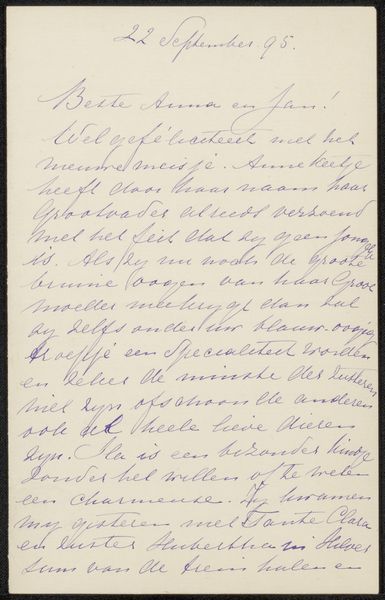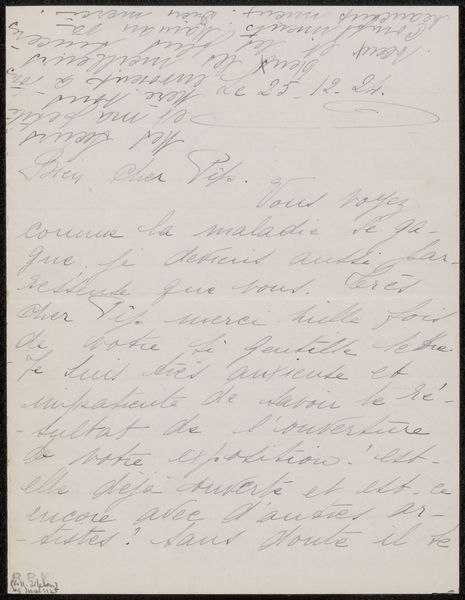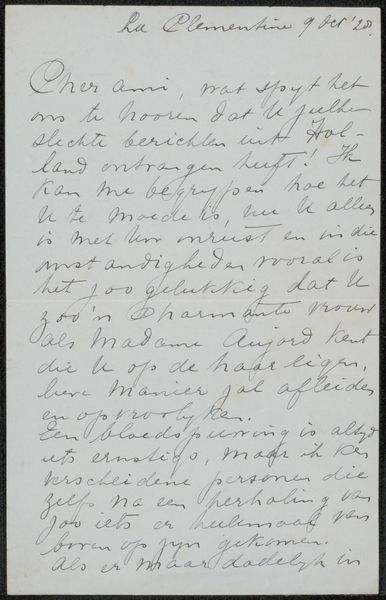
drawing, ink
#
drawing
#
pen sketch
#
ink
#
modernism
Copyright: Rijks Museum: Open Domain
Editor: This is “Brief aan Philip Zilcken,” a letter possibly written between 1901 and 1917 by Ignacio Zuloaga. It appears to be an ink drawing, maybe a pen sketch. It has a melancholy feel… What story do you think this piece is trying to tell? Curator: Well, let's look at this from a historical perspective. Letters, particularly in the early 20th century, served as a primary mode of communication. Consider the power dynamics embedded here. Zuloaga, a prominent artist, is writing to Zilcken, likely another figure of influence in the art world, to decline an invitation. The formal tone – "Monsieur" – speaks to a social code. How might Zuloaga’s refusal to participate in an exhibition reflect the politics of artistic circles at the time? Editor: That's a great point. It's easy to overlook the inherent social and political relationships within the art world itself. Curator: Precisely. Now, think about the handwritten element. In our digital age, the personal touch of handwriting carries a different weight. Back then, it was the norm, but now, doesn't the physical act of writing become a subtle act of resistance against standardization and impersonal communication? Also, what does this allude to about the labour required to create work that would be shipped elsewhere? Editor: Yes, and his lack of ability to accept suggests he had limited say on where his own works might travel to or be displayed. This adds an interesting layer. I initially just saw a sad note, but it actually embodies layers of power, societal expectations, and possibly artistic struggles. Curator: Exactly. These layered meanings encourage us to look beyond a simple reading. Art isn't created in a vacuum; it reflects and responds to the social and political currents of its time.
Comments
No comments
Be the first to comment and join the conversation on the ultimate creative platform.
